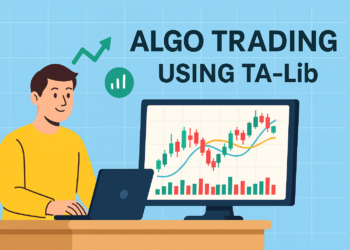Market depth is one of the crucial yet often overlooked concepts in trading. It provides a detailed view of the supply and demand levels in the market, showing you the number of buy and sell orders at different price points. By understanding market depth, traders can make more informed decisions about when to enter or exit a position, manage risk, and even predict short-term price movements. But how can this help you, and why is it important?
What is Market Depth?
Imagine you’re standing in front of a marketplace where sellers are trying to sell their products, and buyers are looking to make purchases. The sellers have different prices for their goods, and the buyers have different offers. Market depth shows this “order book” – the levels of buy and sell orders with their respective prices, helping you visualize the market’s supply and demand.
In the world of financial markets, this information is captured in what’s called an “order book.” The order book shows you:
- Buy Orders (Bids): These are the prices that buyers are willing to pay for an asset.
- Sell Orders (Asks): These are the prices at which sellers are willing to sell their asset.
Market depth refers to the number of orders at each price level. For example, if there are several large buy orders stacked just below the current market price, there is strong support at that level. Similarly, if there are large sell orders above the current price, the market could face resistance at that point.
Simple Example:
Let’s break it down with a simple example of buying shares:
- You see that the current market price of a stock is $50.
- The order book shows:
- Buy Orders (Bids): $49 (100 shares), $48 (200 shares)
- Sell Orders (Asks): $51 (50 shares), $52 (150 shares)
In this example:
- If you’re buying, you’ll have to pay $51 (or higher) to get the shares, as that’s the lowest ask.
- If you’re selling, you’ll be able to sell for $49 (or lower) because that’s the highest bid.
By looking at market depth, you can see where the pressure is coming from – whether the market is more likely to go up or down based on the balance of buy and sell orders at various price levels.
Why is Market Depth Important for Trading?
- Predicting Short-Term Price Movements: If you notice a large number of buy orders near a certain price point, this can act as a price support, and the market may not drop below that level easily. On the other hand, a large number of sell orders can create resistance, preventing prices from rising beyond a certain point.
- Liquidity Insight: Traders often use market depth to gauge liquidity – how easily they can enter or exit a trade without significantly impacting the price. A market with shallow depth may see sharp price movements with minimal volume, while deeper markets generally provide more stability.
- Execution Strategy: Knowing where large buy and sell orders are stacked allows traders to refine their entry and exit strategies, adjusting their orders to avoid slippage or get better prices.
Who Benefits from Market Depth Information?
- Scalpers and Day Traders: These traders rely on quick price movements and often make multiple trades throughout the day. Market depth helps them spot opportunities to enter or exit trades quickly, allowing them to capitalize on small price changes.
- Swing Traders: Traders who hold positions for a few days to weeks also find market depth useful in confirming the strength of support and resistance levels.
- Institutional Traders: Larger market participants, such as hedge funds or investment firms, often use market depth data to avoid “moving the market” too much when making large trades.
- Algorithmic Traders: Many algorithms rely on market depth to assess order flow and determine the optimal times to enter or exit positions based on changes in supply and demand.
The Takeaway:
Market depth is much more than just an overview of buy and sell orders – it provides actionable insights that traders can use to refine their strategies, anticipate price movements, and manage risk effectively. Understanding market depth can give traders a real-time view of market sentiment, and for those who know how to read it, this is an invaluable tool.
Whether you’re just starting in trading or you’re an experienced trader, learning how to interpret market depth can give you an edge. It’s not just about the price; it’s about understanding the why behind the price, and market depth helps you get there.






